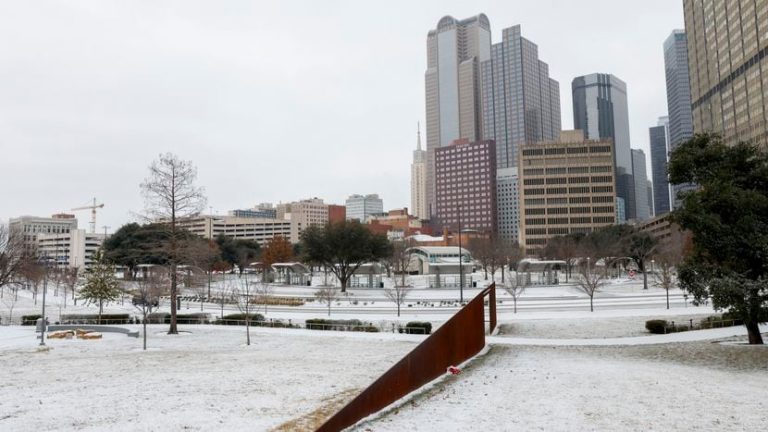Ice storms, cold waves, hail, winter storms: Texas has it all. The combination of these weather events results in losses of at least $754 million in Texas and $106.4 million in Dallas annually, according to the National Hazard Index, a database maintained by the Federal Emergency Management Agency.
The index combines the probability and consequences of natural hazards and community risk factors, and estimates risks at the census and county levels. It calculates expected annual building value losses, agricultural losses, and even expected population losses for 18 natural hazards in the United States, including earthquakes, hurricanes, and coastal flooding.
As an arctic front moves into Texas this week, the state braced for freezing temperatures that will pose a challenge to the electrical grid and city infrastructure, as authorities continue to count the damage it has left behind. Some of the accidents that occurred earlier this week included eight vehicles crashing due to icy road flooding, as well as water outages due to burst pipes.
North Texas counties face the highest risk of hail events in all of Texas, recording approximately 9 hail storms per year resulting in losses of more than $340 million annually. Dallas, Denton, Tarrant and Cullen make up the largest projected annual loss. Dallas County tops the rankings with projected losses of more than $102 million each year, coming mainly from damage to buildings. Denton and Tarrant counties track projected losses of more than $92 million and $85 million due to hail damage, respectively, each year.
According to the Insurance Council of Texas, Texas ranked first nationally in 2022 with 458 hailstorms, more than Nebraska and Minnesota with 399 and 387, respectively. Dallas, Denton and Tarrant counties rank in the top three nationally in expected annual damage to building value due to hail, according to the NRI.
Hail is the most damaging ice-related natural hazard affecting North Texas counties. It's one of the most common severe weather threats in the region, although it's not typically associated with winter precipitation, says Jennifer Dunn, a meteorologist with the National Weather Service in Fort Worth.
“However, we also have hailstones in the fall, and sometimes in early winter, we get strong storm systems and cold fronts, and the ingredients come together to form storms that can produce hailstones in those months.”
The winter weather that Texas is experiencing these days is expected to leave annual losses statewide amounting to $56.9 million, and about $813,000 in Dallas. Winter weather consists of winter storm events in which the main types of precipitation are snow, sleet, or freezing rain, according to the NRI.
Extremely low temperatures persisting for an extended period of time also pose risks to North Texas counties. Texas experiences two or three cold snaps a year, and the NRI estimates they cost North Texas $7 million a year. During cold snaps, public officials encourage residents to stay indoors to reduce the impact of life-threatening temperatures.
The NRI estimates population losses due to natural hazards using the value of statistical life (VSL) scale. The measure treats each death or ten infections as an economic loss of $11.6 million, according to NRI technical documents.
Ice storms, which the National Research Institute defines as freezing rain events, result in expected annual losses of $1.4 million in Denton and $874,000 in Dallas, according to the index. Statewide, more than $33.4 million in projected annual damages have accumulated, with building and property damage totaling $21.6 million.
“Anytime we get winter precipitation, whether it's snow, sleet or sleet, it has an impact on the area, and how the event unfolds can each have different but also very noticeable impacts,” Dunn said.
Although the National Risk Index estimates annual losses based on a formula that includes exposure, annual frequency and historical loss ratio, some winter events go far beyond the calculations. The February 2021 winter storm that hit Texas left $10 billion in damage and became the third most expensive storm in the state after Hurricane Harvey ($20.1 billion) and Hurricane Ike ($15.9 billion), according to the Insurance Council of Texas. It also killed more than 240 people, resulting in $2.7 billion in human losses, according to VSL.
According to a recent report from the National Center for Environmental Information, Texas has experienced at least 170 weather or climate disaster events worth more than $1 billion each, from 1980 to 2023. This includes 100 severe storms, 10 winter storms and one freeze event.
Not only was 2023 marked by a $1 billion freeze in Texas, but it was affected by drought in the South/Midwest and a spring and fall heat wave, which cost $14.5 billion and killed 247 people in 7 states, including Texas.

